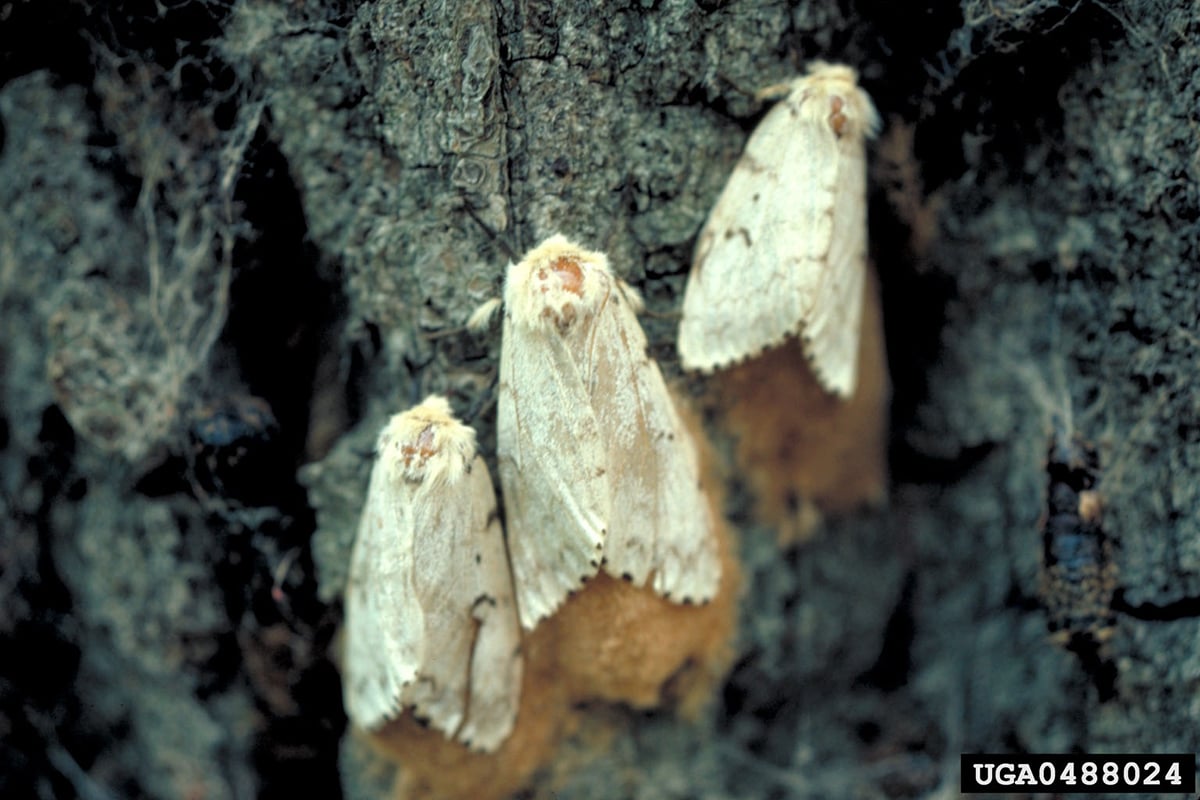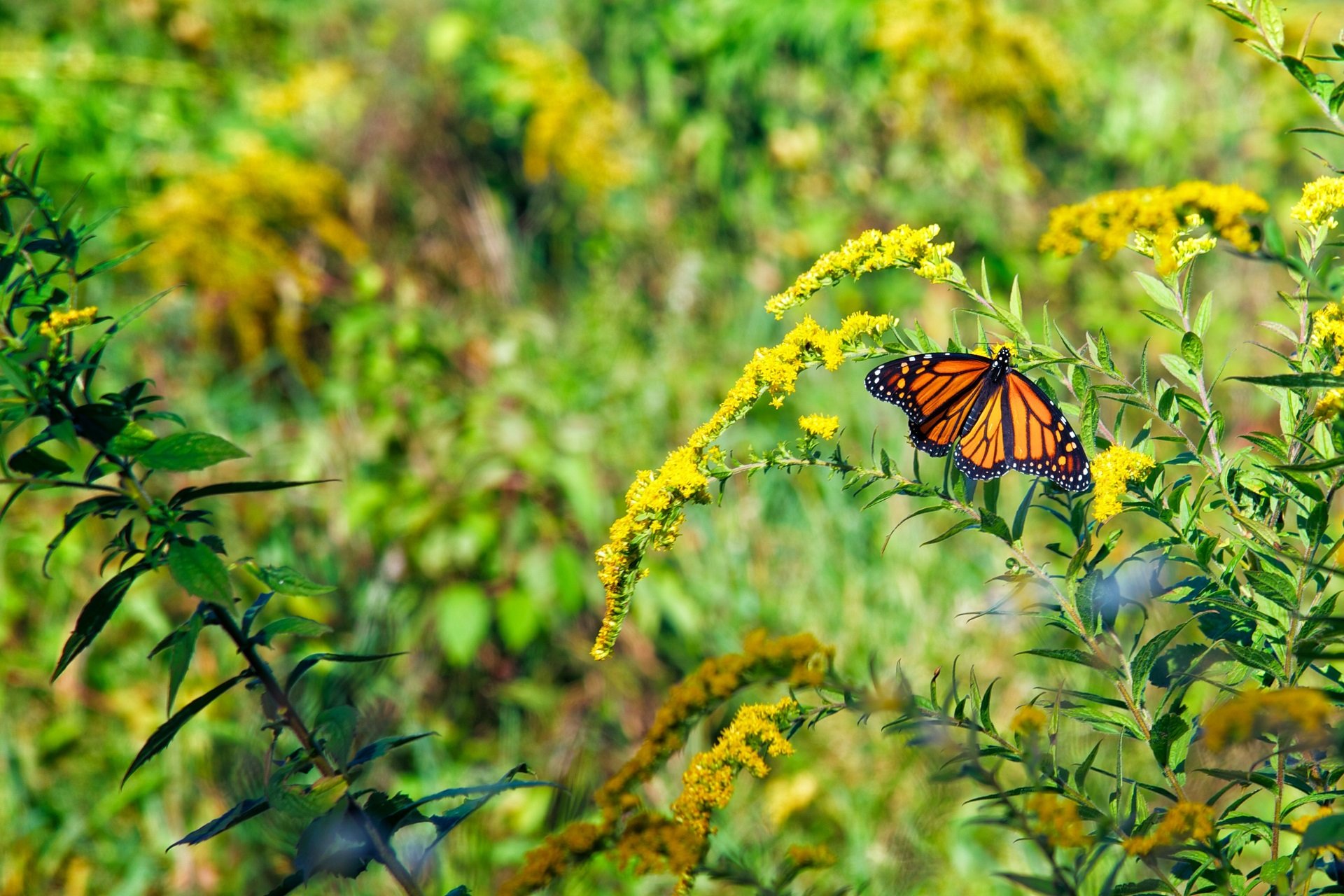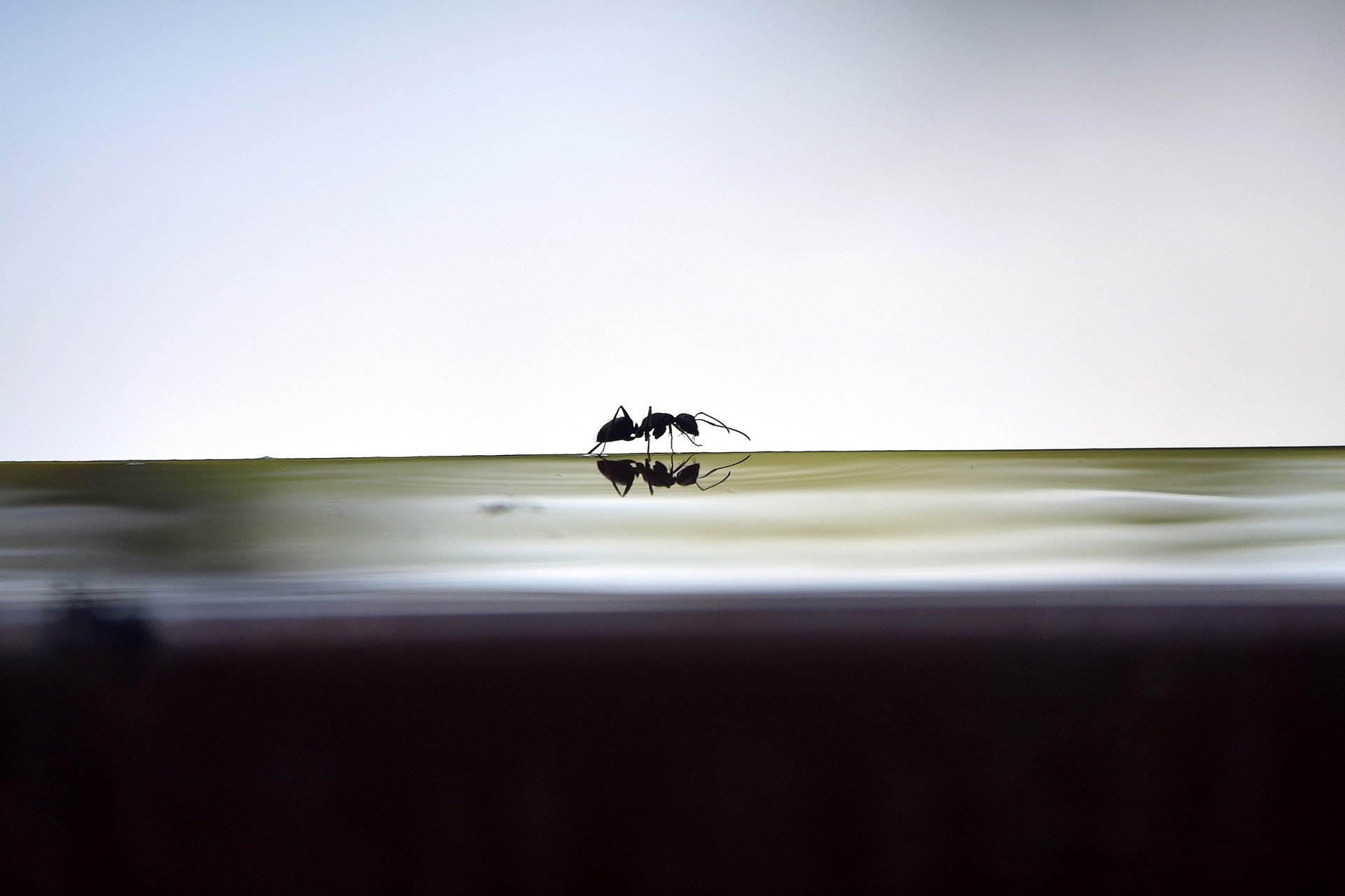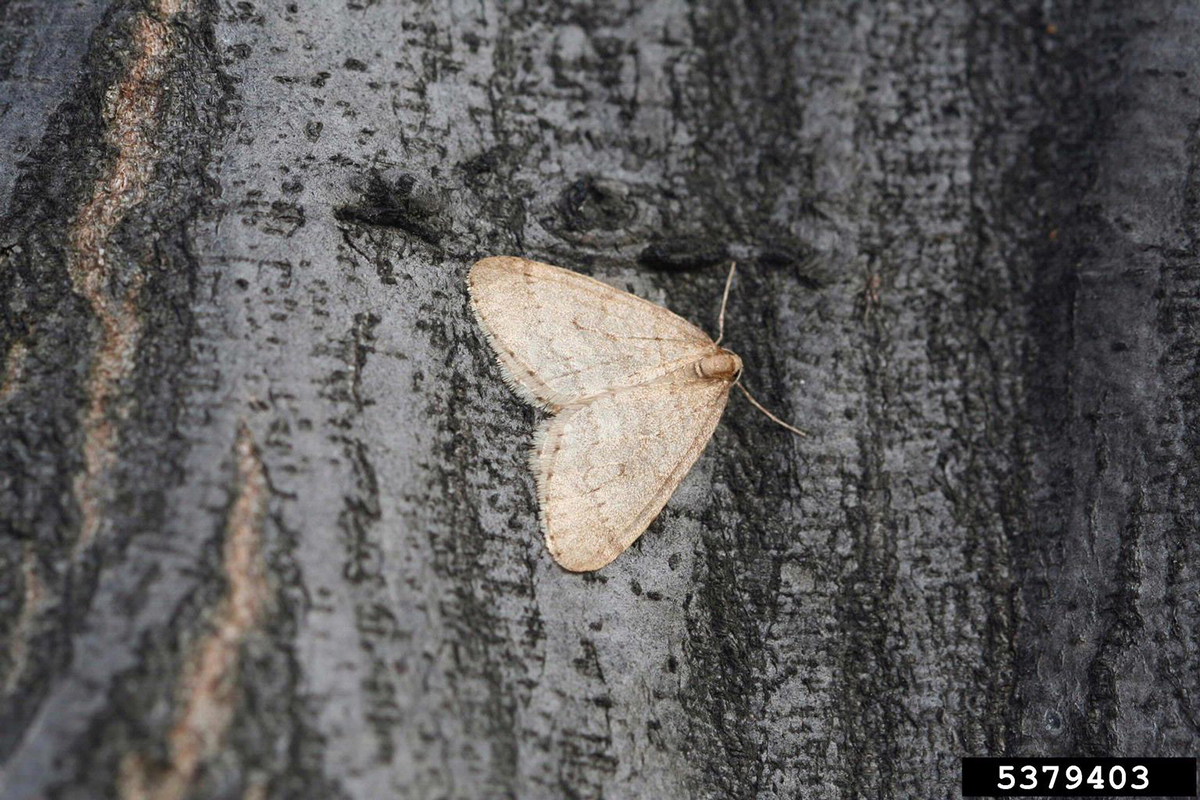Insects & Arachnids
Spongy Moths
The recently renamed Spongy Moth (Lymantria dispar), is native to Europe and Asia. It's a highly invasive, non-native moth that defoliates hundreds of acres of forests across the country—from New England west to Michigan and south to Virginia, as well as on the west coast from California to British Columbia.
Spongy Moth Introduction
The Spongy Moth was introduced to the United States in 1869 by Leopold Trouvelot, a French artist, astronomer, and amateur entomologist. He imported some eggs of this species to Medford, MA, with the idea of breeding a silk-spinning caterpillar that was more resistant to disease than the domesticated silkworm.
Unfortunately, the caterpillars escaped into his backyard. About 10 years later, they began to appear in large swarms, and by the late 1880s they were already causing severe defoliation in the area.
How to Identify Spongy Moth
The Spongy Moth caterpillar and the Eastern Tent caterpillar are often confused, but they are readily distinguished by comparing the markings of the two species.
Spongy Moth caterpillars have five pairs of bluish "warts" followed by six rows of red warts running down the length of the back. Eastern Tent caterpillars, however, have no warts but feature a prominent yellowish-white center stripe above. They also have intricate markings in blue, orange, and white—they're actually quite beautiful.
The time of year is also a helpful clue to caterpillar identification. Eastern Tent caterpillars hatch early (about mid-April) and are quite noticeable by May as they start spinning silken "tents" for shelter. On the other hand, the tiny and inconspicuous Spongy Moth larvae are just beginning to emerge by May.
Mature adult Spongy Moths are sexually dimorphic, which means males and females have different appearances. Females are larger, white and buff in color, and flightless. Males are smaller than females and darker overall with a pattern in shades of brown.
Life Cycle
Like all insects, Spongy Moths go through a series of distinct life stages—egg, caterpillar or larva (which changes in appearance as it grows), pupa, and adult moth.
Hatching in May from buff-colored egg masses deposited on tree trunks or in more sheltered places, the tiny (0.25 inches long) caterpillars almost immediately climb upward toward sunlight and the leaves on which they will begin to feed.
Many of them then spin long silken threads on which they drop down from the foliage. The wind then helps disperse them to other trees, resulting in redistribution of the larvae. Once the caterpillars find a suitable tree—oak, birch, and apple trees are favorites—they begin eating the leaves, growing rapidly, and molting their skins to accommodate their increasing size.
After a few molts, the 1-inch-long larvae avoid light by descending from their host tree just before daybreak and spending the day in dry, dark, sheltered spots under loose bark on trees, in leaf litter below trees, or on the undersides of objects such as picnic tables. At dusk they follow their silk thread and climb back up to the tree’s crown to feed. This is the state when people usually begin to notice the caterpillars and the defoliation of trees.
After passing through five or six instars (larval stages), the caterpillars ultimately reach a length of 1.5 to 2.5 inches. In July they pupate in sheltered locations, such as the undersides of tree limbs and lawn furniture, or inside the wheel wells of parked automobiles. After about two weeks the adult moths emerge.
The flightless female moth gives off a chemical scent called a pheromone, which acts as an attractant to the smaller, brown-colored males. After mating in July or August, each female deposits an egg mass of 75 to 1,000 eggs (mixed with yellowish hairs from her abdomen) on a tree trunk or other surface. The moths die after reproducing, but the egg masses survive the winter and renew the cycle in the spring.
Situations and Solutions
Spongy Moths belong to the widespread family of tussock moths, some of which show cyclical population booms and crashes. During a boom, or outbreak, they can cause massive defoliation most likely in uniform stands of tree species—particularly oaks.
While a disheartening sight, the long-term effect of the phenomenon is not as disastrous as some commonly assume and may in some ways be beneficial. Thinning of forests by Spongy Moths may produce a healthier, more diverse, and perhaps a more Spongy Moth-resistant stand of trees.
Moderate defoliation benefits forest wildlife by stimulating understory growth of shrubs and berry-producing thickets. The larval frass (droppings) fertilize the soil, the larvae provide food for birds and mammals, and the skeletal remains of trees that succumb provide habitat for wildlife, thus promoting diversity in the forest ecosystem.
Yet, it might be comforting to know that there are some natural controls at work as well as some prevention techniques you can employ.
Allergic Reactions to Spongy Moth
For those who may be allergic to Spongy Moth caterpillars, you should minimize contact with the insect by wearing long-sleeved shirts and by drying clothes indoors during an outbreak. Wear gloves and protect exposed skin from the egg masses while removing them.
Should you develop a rash, apply cold compresses and calamine lotion to the affected area. Hydrocortisone cream may also be used, but the rash usually goes away after two to three days without any treatment.
Natural Controls
Some native birds, such as cuckoos, Downy Woodpeckers, Gray Catbirds, and Common Grackles, will eat Spongy Moth caterpillars. But unfortunately, this doesn't happen in large enough quantities to have an effect during an outbreak.
White-footed Mice, and occasionally Gray Squirrels, prey on Spongy Moth larvae and pupae. In addition, there are a number of wasps and flies that parasitize the eggs, larvae, and pupae of the moth. There are also bacterial and mold parasites that attack this moth species.
Several insect and disease controls have also been introduced. The insect predators that were brought here to function as biological controls on Spongy Moth populations prey exclusively on these moths or other closely related species.
One such insect control is a large, green, predacious beetle named Calosoma sycophanta. The adult of this beetle eats Spongy Moth larvae, and the larval beetles seek out and feed on the moth pupae.
How to Prevent Spongy Moths
Inspect Your Yard
In the fall and winter, inspect your property, including woodpiles, stone walls, and lawn furniture for egg masses. To kill them, scrape the eggs into a container and douse them with boiling water, being careful to avoid skin contact. Don't just scrape the eggs onto the ground—they can survive temperatures 20 to 30 degrees below zero Fahrenheit.
Check Your Car
Egg masses deposited in the wheel wells of cars or among stacked woodpiles may account for much of the spread of Spongy Moths from state to state. You can avoid carrying the moths to new areas by checking for, and removing, egg masses before leaving an infested area.
Target Trees
It may be possible to protect individual "specimen trees" in your yard.
- Wrapping tree trunks with aluminum foil covered in a sticky substance, recommended by some sources, has proven to be ineffective and is not good for the health of the trees; you may entrap large numbers of caterpillars, but not nearly enough to curtail the damage.
- Wrapping trees with burlap folded over a cord to entrap caterpillars seeking shelter during the day is also ineffective due to the scope of the problem.
- If you detect infestation of a favorite yard tree early on when the caterpillars are still small you could consider contacting a reputable pest management firm or arborist for advice.
- If spraying of pesticides is recommended, make sure the treatment uses B.t. kurtstaki (Bacillus thuringiensis kurtstaki), a bacterial pesticide that has proven effective in killing young caterpillars of a number of pest species. Unfortunately, it can also kill many of our native butterflies and moths, the vast majority of which are either harmless or beneficial. For B.t. to be effective, it must be applied to the surface of the leaves once they have expanded for the caterpillars to ingest it (i.e. after much damage has already been done within the leaf buds). Also, the mature caterpillars feeding on expanded leaves may be resistant to the bacillus.
Plant Less-Favored Trees
When choosing new plants, try to select species less favored by Spongy Moth caterpillars. Ash, locust, dogwood, sycamore, balsam fir, mountain laurel, and rhododendron are less susceptible to the Spongy Moth.
What Not to Do When Preventing Spongy Moths
Do not use chemical pesticides. Despite extensive control programs using various insecticides—first DDT, now mainly carbaryl (Sevin)—the Spongy Moth has steadily increased its range.
Although these substances do kill the larvae and thereby protect the foliage in the year of application, the insects are never totally eliminated. Furthermore, insecticides also kill the insect predators and parasites of Spongy Moths and interfere with other natural controls such as the virus that kills the caterpillars at high population densities. Applications of carbaryl or other pesticides may actually prolong or exacerbate outbreaks.
Gathering and destroying the caterpillars by hand is a waste of time and effort. You will lose because you will be greatly outnumbered by larvae.
Traps to catch and eliminate the Spongy Moth chiefly benefit the seller. Traps are sometimes used by scientists to count numbers of larvae and predict outbreaks. Disparlure, a synthetic chemical that mimics the sex attractant of female Spongy Moths, is used to lure male moths into traps. This will not control outbreaks, however, because there is no hope of trapping enough males to prevent females from mating.
Stay Connected
Don't miss a beat on all the ways you can get outdoors, celebrate nature, and get involved.






